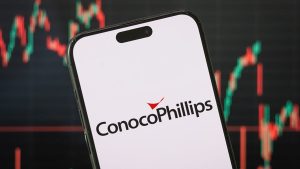How quickly things have changed for AstraZeneca’s (LSE: AZN) share price.
Just last month, it had risen sufficiently to make the firm the first in the UK with a market capitalisation of £200bn+.
Now it has dropped 13% from its 3 September 12-month traded high of £133.38.
However, as a former investment bank trader, the mere fact of it falling – or rising – is irrelevant to my investment decision.
The only question I ever ask nowadays is whether there is any value in a particular stock. If there is, then I will decide whether it suits my current investment criteria overall.
Is there any value in this stock?
My first step here is to look at a key relative stock valuation measure, such as the price-to-earnings ratio (P/E).
AstraZeneca currently trades at a P/E of 37.2. This is the bottom of its competitor group, which has an average P/E of 65. So, it is very undervalued on this basis.
The same applies to the other two key relative valuation ratios I use – price-to-book (P/B) and price-to-sales (P/S).
It trades at a P/B of just 6.1 against a peer average of 37.8. And it has a P/S of 4.9 compared to the 13.3 group average.
To work out what these undervaluations mean in cash terms, I ran a discounted cash flow analysis.
This shows AstraZeneca shares to be 51% undervalued at their current £115.55.
So a fair price would be £235.82, although they may go lower or higher than that. In any event, the answer for me is that there is huge value in the stock.
So why’s it down?
The key driver for the recent price loss was disappointing trial results for its Datopotamab deruxtecan (Dato-DXd) drug. These showed that it failed to significantly extend the lives of breast cancer patients.
However, the firm has since said there is evidence the drug offers value for patients. Consequently, it will continue discussions with regulators about its use.
Any such failure is a blow to a pharmaceutical firm. Future failures on any of its major drugs remain a key risk to AstraZeneca, being costly in time and money.
That said, AstraZeneca already has another breast cancer treatment drug – Enhertu – already approved and on sale, regardless of what happens with Dato-DXd.
Additionally positive is the 23 September announcement that its Fasenra asthma medicine has been recommended for approval in the European Union.
And on 20 September, the US FDA approved AstraZeneca’s FluMist influenza nasal spray vaccine for self-administration. This is the first of its kind that patients can give themselves.
What’s the growth outlook from here?
In its 21 May ‘Ambition 2030 and Beyond’ presentation, the firm said it will achieve $80bn+ in revenues by 2030. This compares to $45.8bn at the end of 2023.
It also said at that point that it is on track to deliver mid-30% core operating margin by 2026. It will target at least mid-30% after that, subject to the development of its portfolio.
As it stands – even after the disappointing Dato-DXd trials –analysts forecast that AstraZeneca’s earnings will grow 16.4% a year to end-2026.
My view
I already hold the shares, which I bought for their significant undervaluation and strong growth prospects. Nothing has changed in my view, so I will buy more very soon.
This post was originally published on Motley Fool





